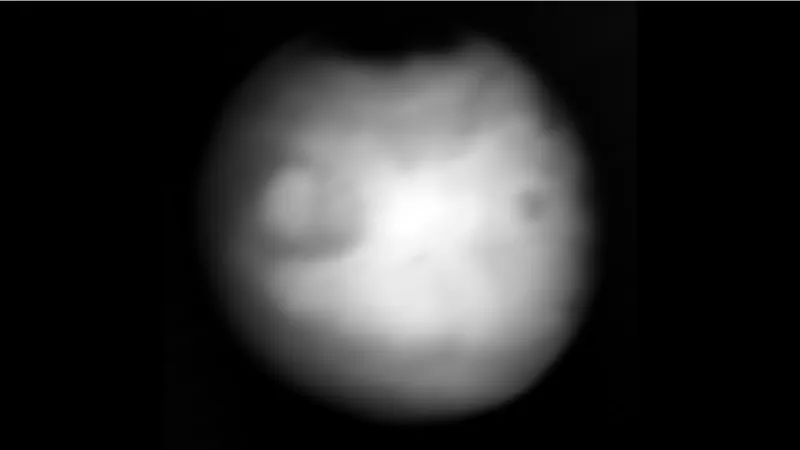
NASA's Europa Clipper Captures Haunting Infrared Image of Mars on Journey to Jupiter
2025-05-13
Author: Daniel
In an extraordinary cosmic photo opportunity, NASA's Europa Clipper spacecraft, currently heading towards Jupiter's enigmatic moon Europa, recently unveiled a ghostly infrared snapshot of Mars. This captivating image not only adds to the spacecraft's collection of cosmic visuals but also aids scientists in fine-tuning its instruments to search for signs of life on Europa.
The stunning image emerged from a precision flyby conducted on March 1, 2025, when the spacecraft swooped within a mere 550 miles (884 kilometers) of the Martian surface. This maneuver, known as a gravity assist, utilized Mars' gravitational pull to slow down the probe and adjust its trajectory for its monumental nearly 2-billion-mile (3.2 billion km) odyssey to Jupiter.
Not just a flyby, this brief encounter served a significant scientific purpose. It was an opportunity for mission control to evaluate the spacecraft’s instruments in deep space, particularly the thermal imager E-THEMIS (Europa Thermal Imaging System), designed to examine Europa's frozen surface for signs of geologic activity. Over the course of 18 minutes, the instrument snapped more than 1,000 black-and-white images, arriving back on Earth on May 5.
To ensure the accuracy of their data, the mission team meticulously compared these new infrared captures against long-term thermal maps created by NASA's Mars Odyssey orbiter, which has been monitoring the Red Planet since 2001. The Odyssey team coordinated their observations with the Europa Clipper flyby to offer direct side-by-side comparisons.
"We aimed for zero surprises in these new images," declared Phil Christensen, a leading researcher at Arizona State University and principal investigator for E-THEMIS. "By capturing images of a planetary body we know so intimately, we ensured the dataset aligns with 20 years of Martian observations."
The E-THEMIS instrument detects infrared light, revealing temperature variations across Martian terrain. Once Europa Clipper reaches the Jupiter system in 2030, these thermal scans will unveil hotspots that may signal recent geologic happenings beneath Europa's icy crust. Moreover, they could pinpoint areas where the moon's vast subsurface ocean is closest to the surface— a tantalizing prospect for astrobiology.
Europa boasts a surface perforated with ridges and fractures, believed to be indicators of oceanic dynamics like rising water or convection currents from beneath the ice. Christensen emphasized the importance of measuring the temperature of these features. If Europa shows signs of activity, those fractures could exhibit warmth when compared to the surrounding ice, especially in areas where the ocean lies tantalizingly near the surface.
This Mars flyby also represented the inaugural comprehensive in-flight test of Clipper’s radar instrument, which had not been fully testable on Earth due to its expansive antennas. Preliminary telemetry hints at a successful trial, with more detailed analyses forthcoming.




 Brasil (PT)
Brasil (PT)
 Canada (EN)
Canada (EN)
 Chile (ES)
Chile (ES)
 Česko (CS)
Česko (CS)
 대한민국 (KO)
대한민국 (KO)
 España (ES)
España (ES)
 France (FR)
France (FR)
 Hong Kong (EN)
Hong Kong (EN)
 Italia (IT)
Italia (IT)
 日本 (JA)
日本 (JA)
 Magyarország (HU)
Magyarország (HU)
 Norge (NO)
Norge (NO)
 Polska (PL)
Polska (PL)
 Schweiz (DE)
Schweiz (DE)
 Singapore (EN)
Singapore (EN)
 Sverige (SV)
Sverige (SV)
 Suomi (FI)
Suomi (FI)
 Türkiye (TR)
Türkiye (TR)
 الإمارات العربية المتحدة (AR)
الإمارات العربية المتحدة (AR)